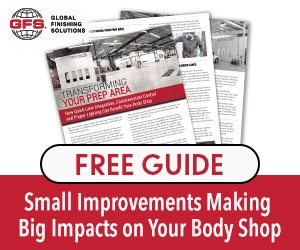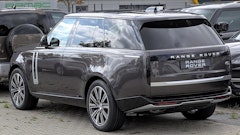
Despite Lean Inventory, Auto Industry Breaks Multiple Records In First Quarter Thanks to Strong Retail Demand
TROY, Mich.–(BUSINESS WIRE)–J.D. Power:
The Retail Sales Forecast
New-vehicle retail sales for the month of March are expected to show growth over March 2020 and March 2019, according to a joint forecast from J.D. Power and LMC Automotive. Retail sales for new vehicles are projected to reach 1,288,100 units, a 70.7% increase compared with March 2020, and an 9.2% increase compared with March 2019, when adjusted for selling days. March 2021 contains one more selling day than March 2020 and one fewer selling day—and one fewer selling weekend—than March 2019. Comparing the same sales volume without adjusting for the number of selling days translates to a year-over-year increase of 77.5% from 2020 and an increase of 5.1% from 2019.
New-vehicle retail sales in Q1 2021 are projected to reach 3,160,500 units, a 20.5% increase from Q1 2020 and a 4.7% increase from Q1 2019.
The Total Sales Forecast
Total new-vehicle sales for the month of March, including retail and non-retail transactions, are projected to reach 1,468,300 units, a 43.6% increase from March 2020 and a 5.0% decrease from March 2019 when adjusted for selling days. Reporting the same numbers without controlling for the number of selling days translates to an increase of 49.4% from March 2020 and a decrease of 8.6% from March 2019. The seasonally adjusted annualized rate (SAAR) for total new-vehicle sales is expected to be 16.4 million units, up 5.2 million units from 2020 and down 0.9 million units from 2019.
New-vehicle total sales in Q1 2021 are projected to reach 3,744,900 units, an 8.0% increase from Q1 2020 and a 6.1% decrease from Q1 2019 due to the decline of less-profitable non-retail/fleet sales.
The Takeaways
Thomas King, president of the data and analytics division at J.D. Power:
Regarding Q1 2021
“The very strong demand for new vehicles among U.S. households seen in January and February is continuing in March, meaning that multiple performance records will be broken for the first quarter. On a volume basis, Q1 retail sales of 3.16 million units will be the second highest ever, and records will be established for average transaction price, total consumer spending on new vehicles and retailer profitability.
“The strong Q1 sales performance is despite lean inventories and ongoing disruption to vehicle production. At an aggregate industry level, Q1 inventories have been sufficient to meet consumer demand and delivered the opportunity for manufacturers and retailers to sell those vehicles with smaller discounts. Manufacturers who are experiencing supply chain challenges are prioritizing production of their most profitable and desirable products, minimizing the net effect. There is no question that sales of specific models in specific geographies are being disrupted by low inventories, but consumers are nevertheless demonstrating their willingness to buy despite having fewer vehicles to choose from in retailer inventory.”
The average price of a new vehicle is on pace to reach $37,314 in Q1—the highest ever for the first quarter—nearly $3,000 higher than 2020 and more than $4,000 higher than 2019.
The combination of strong retail volumes and higher prices means that consumer expenditures on new vehicles is expected to reach a Q1 record of $177.9 billion, up 31% from 2020 and up 18% from 2019.
Retailer profits from new-vehicle sales will reach record levels on both a per unit and total basis. Q1 profit per unit will reach $2.225, up $786 from 2020 and up $835 from 2019, while total profits will reach $7.0 billion, up $3.3 billion from 2020 and up $2.8 billion from 2019.
Manufacturer profits from retail sales will also likely set a record for Q1 due to the combination of strong retail sales, higher average prices and reduced incentives. Q1 incentive spending per unit expressed as a percentage of average vehicle MSRP is trending towards 8.2%, down from 10.4% in Q1 2020 and down from 9.8% in Q1 2019.
“While the slow recovery of fleet sales, coupled with production disruption due to supply chain issues will be a headwind to overall profitability for some manufacturers, the aggregate industry profit performance will be extremely strong.”
Regarding March 2021
“For the month of March, the sales pace started off strong partially due to deferred sales from weather events in February. Despite disparate inventory challenges, the retail sales pace continues to be strong with the industry on track to reach nearly 1.3 million retail units, posting a third consecutive month of year-over-year gains and also showing sales gains relative to pre-pandemic 2019. While March’s sales rate is impressive, the transaction prices and profitability of sales is extraordinary. The combination of strong retail sales, higher transaction prices and smaller discounts means that March will likely be the second most profitable month on record as consumers trend towards spending a total of $48.0 billion on retail vehicle purchases—an amount only eclipsed by the $51.5 billion spent just four months ago in December 2020.”
Retailers continue to turn inventory quickly as the average number of days a new vehicle sits on a dealer lot before being sold is on pace to fall to 53 days, down 20 days from last year.
For March, the average manufacturer incentive per vehicle is on pace to be $3,527, a decrease of $888 from a year ago. Expressed as a percentage of the average vehicle MSRP, incentives for March 2021 are trending towards 8.2%, down three percentage points from a year ago, and the eighth consecutive month below 10%. Total retailer profits per unit, inclusive of grosses and finance & insurance income, are on pace to reach $2,283, an increase of $863 from a year ago. Grosses have been above $2,000 for seven of the last eight months.
Average transaction prices are expected reach another monthly high, rising 7.5% to $37,286—the highest ever for the month of March and nearly at the record set in December 2020. For context, average transaction prices are 20% higher in March 2021 than they were in March 2016 at $31,043.
“Strong consumer demand, tight new- and used-vehicle supply along with disciplined incentives and dealer discounting, low interest rates, high used vehicle values, higher trade-in values, in addition to the continued shift towards more expensive trucks and SUVs, are the key drivers of higher prices.”
SUVs and trucks are on pace to account for a combined 77% of retail sales, the highest mix on record for the month of March, compared with 73% a year ago.
The average interest rate for loans in March is expected to fall 92 basis points to 4.2 % from a year ago. The average monthly finance payment is up only $5 to $595. Concurrently, the average trade-in value has risen to $5,713, an increase of $2,664 (87.4%) from a year ago. Loan terms slightly contracted with the average term falling two months—to 69 months—compared with a year ago.
Looking to April, manufacturers have already started to adjust their component and production mix to minimize the effect from supply chain disruptions. While some vehicle shoppers are likely to experience greater challenges finding their desired vehicle in some geographies in the coming weeks and months, overall inventory levels remain sufficient to maintain a strong and extremely profitable industry sales pace.
Overall, the retail sales outlook for 2021 remains positive. Healthy sales volumes coupled with strong transaction prices and profitability are expected to persist as the industry demonstrates great resilience despite the residual challenges of the pandemic.
Sales & SAAR Comparison
|
U.S. New Vehicle |
March 20211 |
February 2021 |
March 2019 |
|
Retail Sales |
1,288,100 units
(+70.7% higher than March of 2020; |
976,041 units |
1,225,187 units |
|
Total Sales |
1,468,300 units
(+43.6% higher than March 2020; |
1,183,651 units |
1,605,752 units |
|
Retail SAAR |
14.5 million units |
13.3 million units |
13.3 million units |
|
Total SAAR |
16.4 million units |
15.7 million units |
17.3 million units |
1 Figures cited for March 2021 are forecasted based on the first 17 selling days of the month.
2 March 2021 has 26 selling days, one more day than March 2020 and one fewer day than March 2019.
The Details
- The average new-vehicle retail transaction price in March is expected to reach a monthly record $37,286. The previous high for any month, $37,966, was set in December 2020.
- Average incentive spending per unit in March is expected to reach $3,527, down from $4,415 in March 2020 and down from $3,789 in March of 2019. Spending as a percentage of the average MSRP is expected to reach 8.2%, down 2.5 percentage points from March 2020 and down 1.4 percentage points from March 2019.
- Average incentive spending per unit on trucks and SUVs combined in March is expected to be $3,481, down $1,119 from a year ago and down $341 from 2019, while the average spending on cars is expected to be $3,668, down $220 form a year ago and down $43 from 2019.
- Consumers are on pace to spend $48.0 billion on new vehicles, the highest ever for the month of March, and up $22.9 billion from March 2020 and up $7.4 billion from March 2019.
- Truck/SUVs are on pace to account for 77.1% of new-vehicle retail sales in March.
- Fleet sales are expected to total 180,200 units in March, down 33% from March 2020 and down 51% from March 2019 on a selling day adjusted basis. Fleet volume is expected to account for 12% of total light-vehicle sales, down from 26% a year ago.
Observations on New Vehicle Residual Values
Eric Lyman, vice president, ALG:
“While supply chain issues continue to be problematic for the automotive industry, residual values stand to benefit from the reduction in used supply, lower incentives and higher new-vehicle transaction prices. Accordingly, ALG’s residual value forecast for the March/April publication stands at 54.0% of original MSRP for 2021 model year vehicles returning to the used market in 2024. The March/April 2021 forecast represents the strongest on record. Low finance rates led to a surge in auto loans for 2020, however, with residual values reaching historic levels, manufacturers and consumers will have the option to return to leasing to maintain sales momentum when supply levels return.”
Observations on the Used Vehicle Market
Jonathan Banks, vice president, Valuations Services:
“The used vehicle market continues to heat up as we transition into the spring market. Through the first three weeks of March, wholesale prices increased 2.5% to 3% per week, and are now 5% higher than their previous all-time high recorded back in August 2020. Entering 2021, we expected used prices to remain near record levels bolstered by tight wholesale auction sales, lean new-vehicle incentives and the expectation that employment would improve throughout the year. But new market pressures from the ongoing semiconductor, seating foam and plastic supply chain issues have helped strengthen wholesale prices even more than expected. Auction sales in March are running about 25% to 30% below 2020 levels, causing dealers to compete like never before for a finite number of used vehicles.”
Global Sales Outlook for March 2021
Jeff Schuster, president, Americas operations and global vehicle forecasts, LMC Automotive:
“Through the first two months of the year, global light-vehicle sales are performing well overall. Volume is up 7% from the same period a year ago and the selling rate held at an average of 82 million units, up from 70 million in 2020. As we now compare sales to those at the beginning of the pandemic, a wide variation across the markets is evident. China surged 73% higher in the first two months of 2021 from 2020, while North America and Europe were down 14% and 19%, respectively. Globally, the selling rate in March is expected to nudge slightly higher to 84 million units thanks to more robust sales in China, Europe, India and the United States, compared with March 2020.
“Assembly plant stoppages related to semiconductor and petrochemical shortages, weather and even plant fires have plagued the start of the year. This puts additional pressure on the industry’s recovery. Our 2021 forecast for global light-vehicle sales stands at 87 million units, an increase of 12% from 2020 and unchanged from a month ago. The auto industry has already had to deal with many unusual disturbances in the first quarter and, while there’s still a risk of further negative effects, we’re optimistic that 2021 will stay on track.”
About J.D. Power and Advertising/Promotional Rules www.jdpower.com/business/about-us/press-release-info
About LMC Automotive www.lmc-auto.com
Contacts
Geno Effler, J.D. Power; West Coast; 714-621-6224; media.relations@jdpa.com
Emmie Littlejohn, LMC Automotive; Troy, Mich.; 248-817-2100; elittlejohn@lmc-auto.com





















